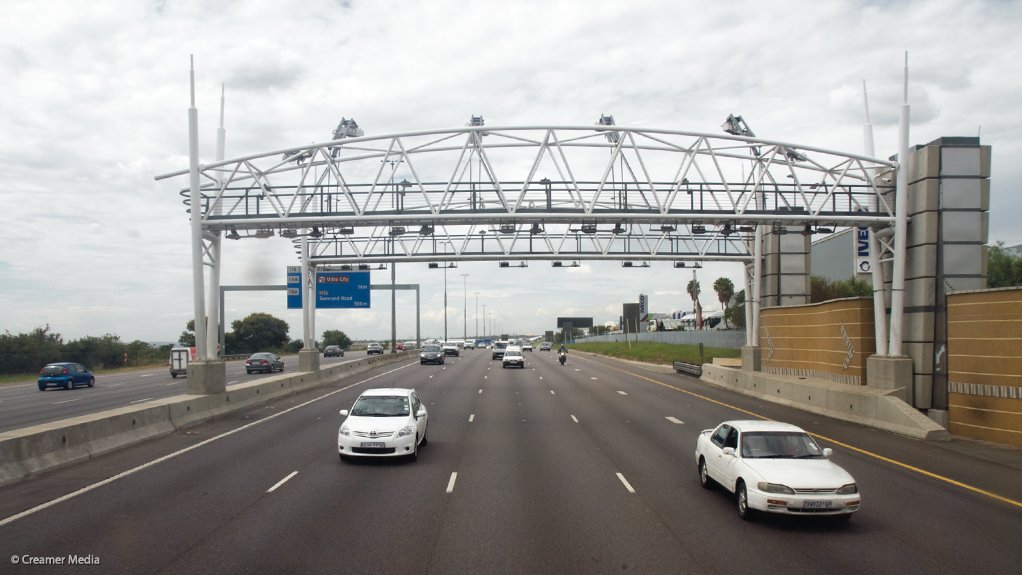Sanral to introduce one ticket system for all public transport, tolling
State-owned South African National Roads Agency Limited (Sanral) is aiming to move away from traditional toll accounts to mobility accounts, Sanral northern region project manager Siveshni Pillay revealed this week.
Speaking at the African Smart Cities Summit, in Midrand, on June 8, she said the mobility account would incorporate account-based ticketing (ABT), which was a form of integrated public transport fare management where commuters would have one ticket for all public transport throughout the country.
“We're very far in the process with communication with multiple municipalities, provincial governments, the Passenger Rail Agency of South Africa and with all other major players who provide public transport.
“Commuters won't have to worry about whether they need a ticket for a train versus a ticket for a bus. It's an all-in-one ticket system,” Pillay explained.
Through the ABT system, public transport commuters can travel by tapping or scanning a secure token which is linked to their mobility account. Any value or information on the account is stored in the back office only, and the fare is charged to the commuter after their journey.
“The traditional transport travel card does not have any value stored on the card chip but acts as identification of the traveller only. We work on the premise that mobility on our public transport is integrated and stems from one system,” Pillay added.
The Sanral mobile application (app), which road users can download on their mobile smartphones and tablets, also allows for users to have a means of managing their mobility account, which is envisaged to integrate into any travel-related infrastructure.
Through the app, road users can also manage their user profiles, their vehicle data, travel information and other information such as parking at shopping centres and malls countrywide. All this information is uploaded in real time.
She said the ABT system and the mobile app were part of Sanral’s mobility strategy, which continued to assist in managing and operating the national road network.
“Developing and documenting our smart mobility strategy talks to a new mind shift that incorporates existing implemented smart solutions and new solutions into a strategic document with clear key deliverables and targets.
“There’s a growing trend towards using technology to optimise infrastructure and innovation on national roads. Implementing and enhancing these smart solutions is critical to ensure that we continue to deliver on an effective, reliable and impactful national road network for road users,” Pillay said.
One of the key innovative solutions that Sanral has introduced is the freeway management system (FMS), which monitors national freeways 24/7, 365 days a year.
Through FMS, Sanral has been able to manage congestion on its freeways by using various intelligent tools. These tools enable Sanral to respond speedily when there is an accident in Gauteng with dedicated On Road Services.
“FMS plays an important role in reducing delays [as a result of] accident scenes on the freeways. By reducing travel delays, FMS also plays an important role in saving time travelling on the national road network,” Pillay said.
The pilot project on the FMS initiative started in October 2006 and has since been deployed in three cities – Johannesburg, Durban and Cape Town.
Closely linked to FMS, another smart mobility solution that Sanral introduced in 2000 was electronic toll collection (ETC), which was aimed at minimising movement delays and payments at toll plazas through a one tag, one account, central clearing system.
This means that road users with an electronic tag (e-tag) in their vehicles can use this system at all existing toll plazas that are managed by Sanral where e-tag readers are installed.
Pillay said Sanral had also already undertaken numerous research projects that were currently under way on its mobility innovation programme, with universities and industry experts contributing their knowledge and expertise.
“Futuristic solutions include autonomous vehicle test sections across the country, electrical vehicle charging facilities, as well as battery exchange facilities, smart roads which will entail in-road wireless charging, and truck platooning, to mention a few,” Pillay said.
Article Enquiry
Email Article
Save Article
Feedback
To advertise email advertising@creamermedia.co.za or click here
Comments
Press Office
Announcements
What's On
Subscribe to improve your user experience...
Option 1 (equivalent of R125 a month):
Receive a weekly copy of Creamer Media's Engineering News & Mining Weekly magazine
(print copy for those in South Africa and e-magazine for those outside of South Africa)
Receive daily email newsletters
Access to full search results
Access archive of magazine back copies
Access to Projects in Progress
Access to ONE Research Report of your choice in PDF format
Option 2 (equivalent of R375 a month):
All benefits from Option 1
PLUS
Access to Creamer Media's Research Channel Africa for ALL Research Reports, in PDF format, on various industrial and mining sectors
including Electricity; Water; Energy Transition; Hydrogen; Roads, Rail and Ports; Coal; Gold; Platinum; Battery Metals; etc.
Already a subscriber?
Forgotten your password?
Receive weekly copy of Creamer Media's Engineering News & Mining Weekly magazine (print copy for those in South Africa and e-magazine for those outside of South Africa)
➕
Recieve daily email newsletters
➕
Access to full search results
➕
Access archive of magazine back copies
➕
Access to Projects in Progress
➕
Access to ONE Research Report of your choice in PDF format
RESEARCH CHANNEL AFRICA
R4500 (equivalent of R375 a month)
SUBSCRIBEAll benefits from Option 1
➕
Access to Creamer Media's Research Channel Africa for ALL Research Reports on various industrial and mining sectors, in PDF format, including on:
Electricity
➕
Water
➕
Energy Transition
➕
Hydrogen
➕
Roads, Rail and Ports
➕
Coal
➕
Gold
➕
Platinum
➕
Battery Metals
➕
etc.
Receive all benefits from Option 1 or Option 2 delivered to numerous people at your company
➕
Multiple User names and Passwords for simultaneous log-ins
➕
Intranet integration access to all in your organisation

















